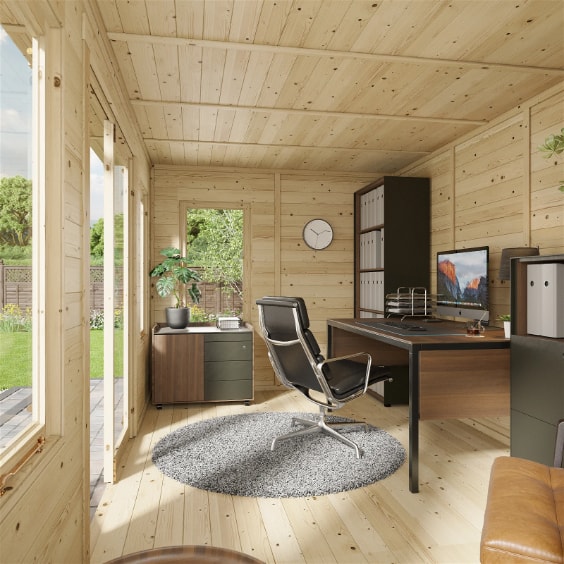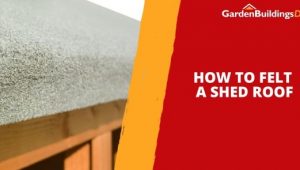Jump to:
The thicker the logs, the better when it comes to a log cabin’s insulation efficiency. But how well is it insulated? Here’s what you need to know.
Are Log Cabins Insulated?
By default, garden log cabins offer partial insulation from the wood itself. Wood is a natural insulator with thermal mass, meaning it can absorb, store, and release heat. So, a 44mm log cabin is more effective at insulating, as extra thickness retains more heat. For more information, read our guide on log cabin thickness.
However, timber alone won’t be as effective due to gaps that can form over time due to expansion and contraction. The common solution is to add more insulation on the floor, walls, and roof, as well as on windows and doors. Without these, it won’t be as insulated as a garden room made from structural insulated panels (SIP).

How Are Log Cabins Insulated?

Installing double-glazed doors and windows is one of the simplest ways to do so. This applies if your log cabin doesn’t have this feature. Basically, the windows and doors have two panes of glass with a gap in between. It can be DIYed, but it’s best left to a professional.
Another approach is insulating the floors, walls, and roof with:
- Foam insulation boards
- EcoFoil
- Fibreglass
- Expanded polystyrene (EPS)
On the walls and ceiling, insulation is held in place by wooden framing, with a thin panel or plasterboard on top. Under the floors, it sits on the floor bearers.
Overall, this improves the cabin’s energy efficiency, shown by its U-value. It measures how effective the material is at preventing heat from escaping. The lower the U-value, the better the insulation.
Thicker logs and, say, foam boards reduce the U-value by slowing heat transfer. For instance, a 44mm log wall insulates vs a thinner 19mm wall because there’s more material to resist heat flow.
Adding filler to walls, roofs, and floors, like EPS or EcoFoil, also creates more layers that trap heat. This further lowers the U-value and improves energy efficiency.
Note that modifying your log cabin with insulation is undertaken at your own risk.
How to Seal a Log Cabin Against Cold?

Fill gaps with chinking or caulking, and maintain regular upkeeps for long-term benefits.
With chinking, you fill the gaps between logs using a mortar or a chinking compound. Caulking, in contrast, is sealing smaller gaps and cracks with a sealant. Either way, it stops drafts and moisture from getting in.
After heavy rain, snow, or strong winds, check your log cabin for any gaps, cracks, or worn sealant. If it has floor insulation, see to it it’s still in place and hasn’t shifted or worn down. Any spots you find that need attention can be resealed or replaced to keep the warmth inside.
Also, apply wood treatments as recommended to keep the timber’s insulating properties. For more tips:
Log Cabin Maintenance Checklist
Keeping your log cabin warm is easier with insulation and maintenance. Now, if you want to skip the hassle, an insulated log cabin kit might be for you. Make sure you’re making the right investment by reading this next: Log Cabin Buying Guide [two-way link]





